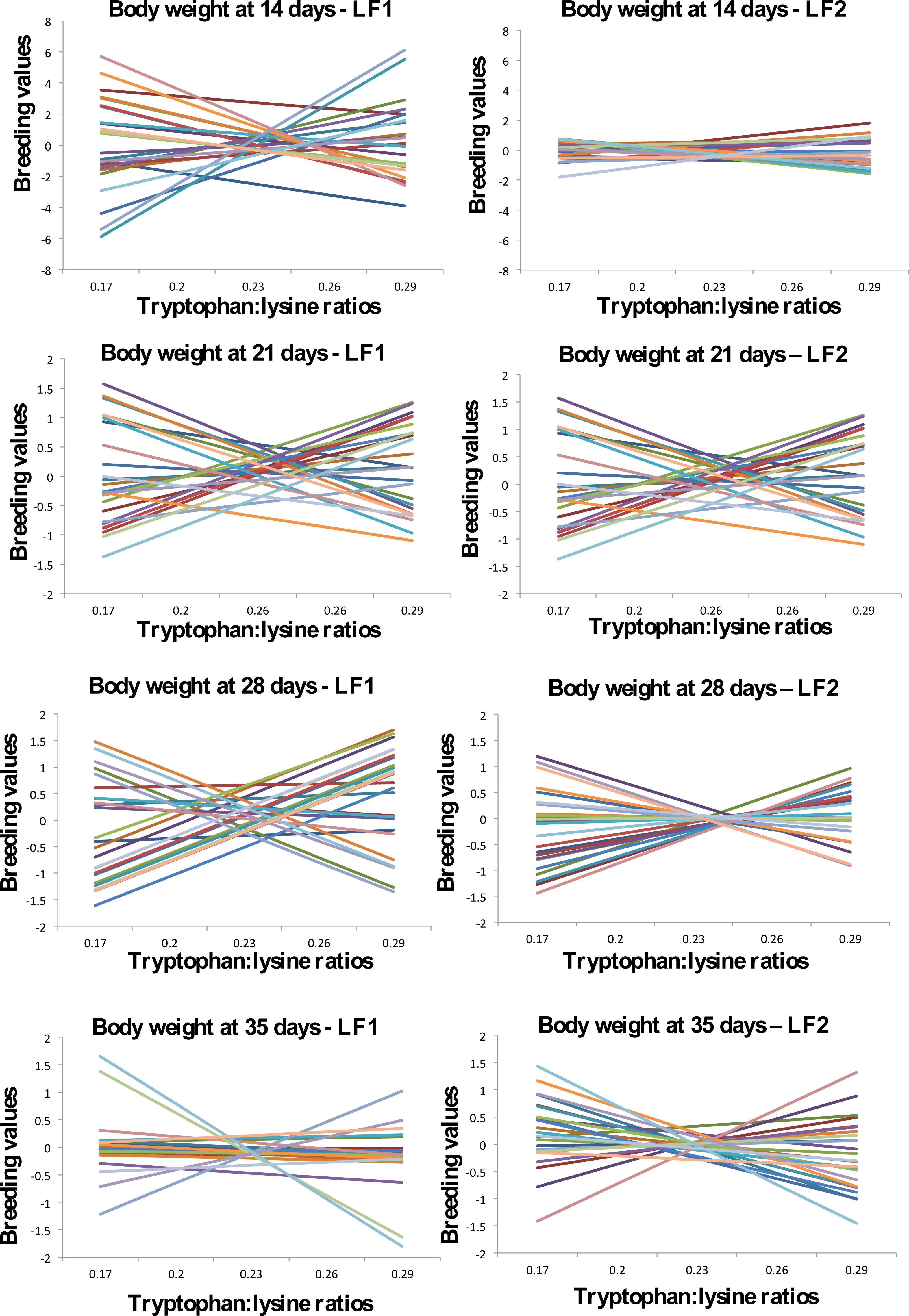SUMMARY
We aimed to evaluate the random regression models that promote the best fit of residual variance predicting the breeding values of quail body weights and the sensitivity of its breeding values to the variations of different tryptophan:lysine ratios in the diets via reaction norms. A total of 1112 meat quails from LF1 and LF2 lines with 35 days of age were evaluated. During the period of 1 to 21 days of age, birds were fed with different tryptophan:lysine ratios (0.17, 0.20, 0.23, 0.26 and 0.29%) containing 2900 kcal ME/kg and 26.10% crude protein, followed by basal diet provided up to 35 days. The best model fit for residual variance was evaluated comparing heterogeneity (2, 3 and 4 classes) and homogeneity (1 class), including sex as fixed effect and the additive genetic effect as random. The second order Legendre polynomial was used to analyze the genotype x environment interaction using reaction norms. The model considering two classes of residual variance was the one that promoted the best fit of the data, being adopted to predict the breeding values. Thus, we observed changes in the sensitivity of the breeding values, characterized by the rearrangement of the breeding values, according to the different ratios of amino acids, suggesting the genotype x environment interaction.
Keywords:
Coturnix coturnix; genotype x environment interaction; heterogeneity of variance; reaction norm; tryptophan


